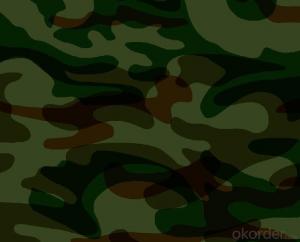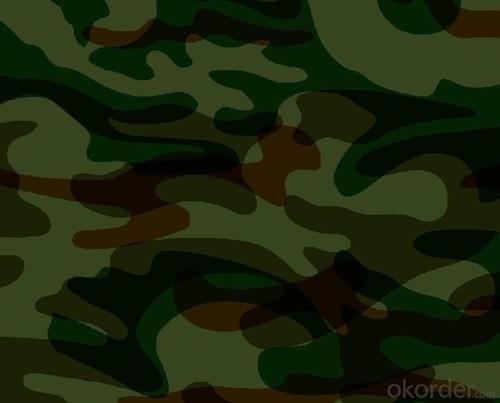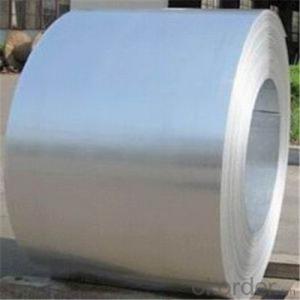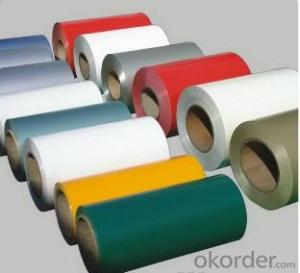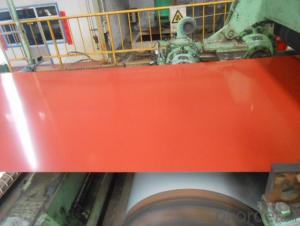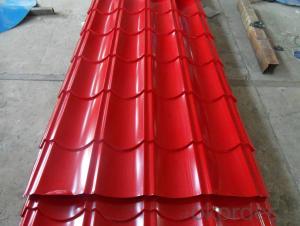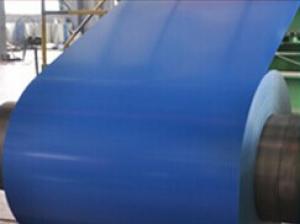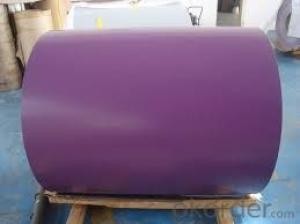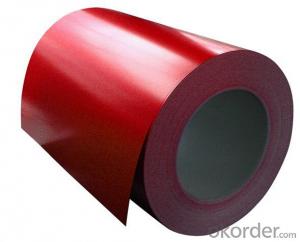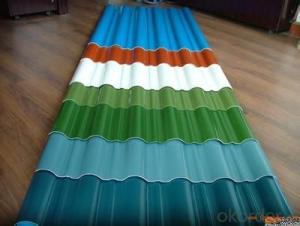Pre-Painted Galvanized/Aluzinc Steel Coil --Workability, Durability
- Loading Port:
- China main port
- Payment Terms:
- TT OR LC
- Min Order Qty:
- 50 m.t.
- Supply Capability:
- 10000 m.t./month
OKorder Service Pledge
OKorder Financial Service
You Might Also Like
1. Pre-Painted Galvanized/Aluzinc Steel Coil --Workability, Durability
With GI as base material, after pretreatment (degrease and chemical treatment ) and liquid dope with several layers of color, then after firing and cooling, finally the plate steel is called pre-painted galvanized (aluzinc) steel. Pre-painted galvanized steel is good capable of decoration, molding, corrosion resistance.
2.Main Features of the Pre-Painted Galvanized/Aluzinc Steel Coil:
• Excellent process capability
• Smooth and flat surface
• Workability, durability
3.Pre-Painted Galvanized/Aluzinc Steel Coil Images
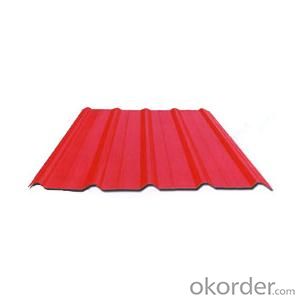
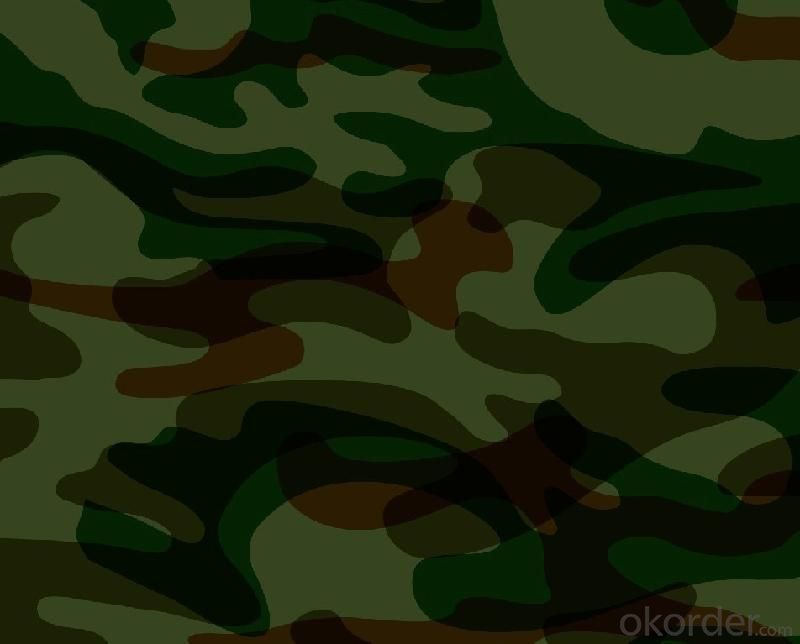
4.Pre-Painted Galvanized/Aluzinc Steel Coil Specification
Standard: AISI, ASTM, BS, DIN, GB, JIS
Grade: DX51D, DX52D
Thickness: 0.17-2.0mm
Brand Name: KMRLON
Width: 20-1250mm
Length: customized
commoidty: pre-painted galvanized steel coil
Thickness: 0.13-4.0mm
width: 20-1250mm
zinc coating: 40-180g/m2
printing thickness: top side: 20+/-5 microns, back side: 5-7 microns
coil weight: 4-7 tons
5.FAQ of Pre-Painted Galvanized/Aluzinc Steel Coil
1. What’s the application of this product?
Roof, roof structure, surface sheet of balcony, frame of window, etc.
2. How to guarantee the quality of the products?
We have established the international advanced quality management system,every link from raw material to final product we have strict quality test;We resolutely put an end to unqualified products flowing into the market. At the same time, we will provide necessary follow-up service assurance.
- Q: What are the different types of steel coil finishing equipment?
- There are several types of steel coil finishing equipment, including slitting lines, cut-to-length lines, blanking lines, and coil coating lines. Slitting lines are used to cut large coils into smaller widths, while cut-to-length lines cut coils into specific lengths. Blanking lines are used to cut complex shapes out of coils, and coil coating lines apply a protective or decorative coating to the surface of the steel coil.
- Q: How do steel coils contribute to seismic resistance in structures?
- Steel coils contribute to seismic resistance in structures by providing strength, flexibility, and energy dissipation. When steel coils are incorporated into the structure's design, they act as seismic dampers, absorbing and dissipating the energy generated during an earthquake. The coils help to distribute and reduce the seismic forces, minimizing structural damage and enhancing the overall stability and resilience of the building. Additionally, the flexibility of steel coils allows them to withstand forces without breaking, ensuring the structure's integrity and safety during seismic events.
- Q: I am doing a project on how revolvers work and what materials they use and would like to know what specific grade of stainless steel they use for the manufacturing of the frame and cylinder?
- *Rifle barrels are usually made from steel alloys called ordinance steel, nickel steel, chrome-molybdenum steel, or stainless steel, depending upon the requirements of the cartridge for which they are chambered. The higher the pressure and velocity of a cartridge (pressure and velocity usually go up together), the faster it will wear out a barrel. To give a satisfactory service life, barrels for high velocity cartridges must me made from tougher and harder steel than barrels for lower pressure cartridges. *The 400 (416) series SS commonly known as ordnance grade , is what barrels are made from . *If you want your barrel to be made from super alloy then it is 718 Inconel ,but a costly affair.
- Q: How are steel coils used in the production of food processing equipment?
- Steel coils are commonly used in the production of food processing equipment due to their various advantageous properties. These coils, typically made from stainless steel, are used in the manufacturing of a wide range of equipment such as mixers, blenders, conveyors, ovens, and fryers. One of the main reasons steel coils are used in food processing equipment is their excellent resistance to corrosion. Stainless steel coils are highly resistant to rust and can withstand exposure to moisture and various food substances without deteriorating. This is crucial in ensuring the equipment remains hygienic and safe for food processing. Additionally, steel coils provide exceptional strength and durability, allowing food processing equipment to withstand heavy use and harsh operating conditions. The coils can be formed into different shapes and sizes, enabling the fabrication of complex equipment components. This versatility facilitates the design and construction of equipment that is both efficient and reliable in processing various food products. Furthermore, steel coils are easy to clean and maintain. The smooth surface of stainless steel makes it resistant to staining and facilitates the removal of food residues, preventing the growth of bacteria. Regular cleaning and sanitization of food processing equipment are essential for maintaining food safety standards, and steel coils make this process easier and more effective. Moreover, steel coils have excellent heat conductivity properties, allowing for efficient heat transfer in food processing equipment such as ovens and fryers. This enables precise temperature control and uniform cooking, ensuring consistent quality of processed food products. In summary, steel coils play a vital role in the production of food processing equipment by providing corrosion resistance, strength, durability, ease of cleaning, and efficient heat transfer. These qualities make steel coils an ideal material for manufacturing equipment that meets the high standards of hygiene, safety, and quality required in the food processing industry.
- Q: What are the common welding techniques used for steel coils?
- The common welding techniques used for steel coils include gas metal arc welding (GMAW), flux-cored arc welding (FCAW), and submerged arc welding (SAW). These techniques offer different advantages in terms of speed, efficiency, and weld quality, allowing for diverse applications in the steel industry.
- Q: I mean 4 inch thick steel like was used in the WTC buildings, especially WTC 7 which did not get hit by a plane. Can carpeting, desk chairs, water coolers and dry erase boards burn hot enough and long enough to melt steel that is normally made in a blast furnace?
- Gavin, the danger posed by steel columns and girders during a fire in a building, is not the danger of the steel melting but of the steel expanding and snapping the bolts that hold all of the steel together. Very high temperatures can be achieved in a building fire because the up-draft caused by the rising hot air, delivers a massive amount of oxygen to the burning carpet, paper and furniture. When a steel frame office tower burns, the heat expands the steel and snaps the bolts. This causes the building to fall-down and not necessarily, burn-down. I am too lazy to look-up the melting point of steel but it is not very high. That is one reason for the columns and girders in steel framed buildings, to be covered in asbestos (which is a fatally toxic material) or magnesium di-oxide.
- Q: How are steel coils used in the marine industry?
- Steel coils are commonly used in the marine industry for various applications such as shipbuilding, offshore structures, and maritime equipment. These coils are used to manufacture components like hulls, decks, bulkheads, and other structural parts that require high strength and durability. Additionally, steel coils are also used in the production of marine machinery, pipelines, and storage tanks, ensuring the reliability and performance of vessels in harsh marine environments.
- Q: What are the common coil thickness tolerances?
- The common coil thickness tolerances can vary depending on the specific industry and application. However, in general, common coil thickness tolerances range from +/- 0.001 to +/- 0.010 inches.
- Q: Are steel coils susceptible to damage during storage or transportation?
- Steel coils can be damaged easily when they are stored or transported. They are quite heavy and can easily become deformed, bent, or scratched if they are not handled properly. It is also important to stack and secure them correctly during transportation to prevent them from shifting or moving, as this can also lead to damage. Moreover, the steel coils can be affected by moisture, extreme temperatures, or corrosive substances, which can compromise their quality. Therefore, it is vital to handle, store, and transport steel coils with great care to minimize the chances of damage and maintain their overall integrity and usability.
- Q: What are the common coil processing equipment used in the industry?
- Some common coil processing equipment used in the industry include coil slitters, coil flatteners, coil feeders, and coil recoilers. These machines are essential for processing metal coils into various shapes and sizes, allowing for efficient production and manufacturing processes.
Send your message to us
Pre-Painted Galvanized/Aluzinc Steel Coil --Workability, Durability
- Loading Port:
- China main port
- Payment Terms:
- TT OR LC
- Min Order Qty:
- 50 m.t.
- Supply Capability:
- 10000 m.t./month
OKorder Service Pledge
OKorder Financial Service
Similar products
Hot products
Hot Searches
Related keywords
